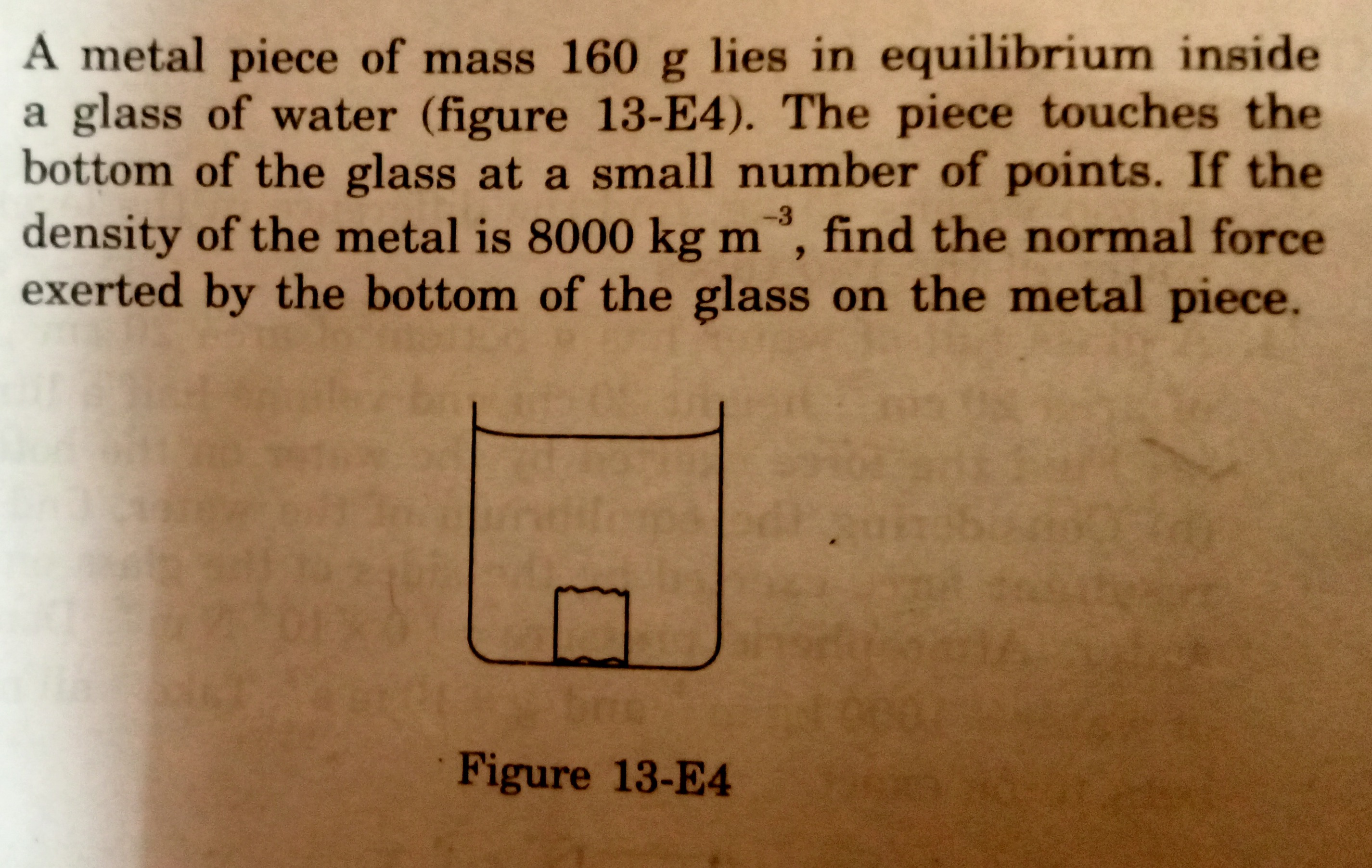Question
Question: A metal piece of mass 160 g lies in equilibrium inside a glass of water (figure 13-E4). The piece to...
A metal piece of mass 160 g lies in equilibrium inside a glass of water (figure 13-E4). The piece touches the bottom of the glass at a small number of points. If the density of the metal is 8000 kg m−3, find the normal force exerted by the bottom of the glass on the metal piece.

1.4 N
Solution
The metal piece is in equilibrium under the action of three forces:
- Weight (W) acting downwards.
- Buoyant force (FB) acting upwards.
- Normal force (N) exerted by the bottom of the glass acting upwards.
From the equilibrium condition, the sum of upward forces equals the downward force: N+FB=W Therefore, N=W−FB.
-
Calculate the weight (W): Mass of the metal piece, m=160 g =160×10−3 kg. Assuming acceleration due to gravity g=10 m/s2. W=mg=(160×10−3 kg)×(10 m/s2)=1.6 N.
-
Calculate the volume of the metal piece (V): Density of the metal, ρmetal=8000 kg/m3. V=ρmetalm=8000 kg/m3160×10−3 kg=80000.16 m3=2×10−5 m3.
-
Determine the submerged volume and calculate the buoyant force (FB): Density of water, ρwater=1000 kg/m3. Since ρmetal>ρwater (8000 kg/m3 > 1000 kg/m3), the metal piece sinks and is fully submerged. So, the submerged volume Vsubmerged=V=2×10−5 m3. The buoyant force is given by Archimedes' principle: FB=ρwater⋅Vsubmerged⋅g FB=(1000 kg/m3)×(2×10−5 m3)×(10 m/s2)=0.2 N.
-
Calculate the normal force (N): N=W−FB=1.6 N−0.2 N=1.4 N.
